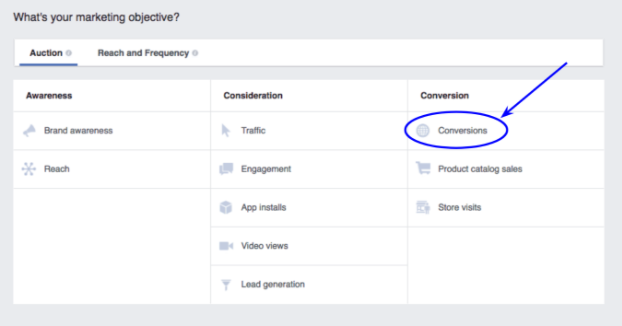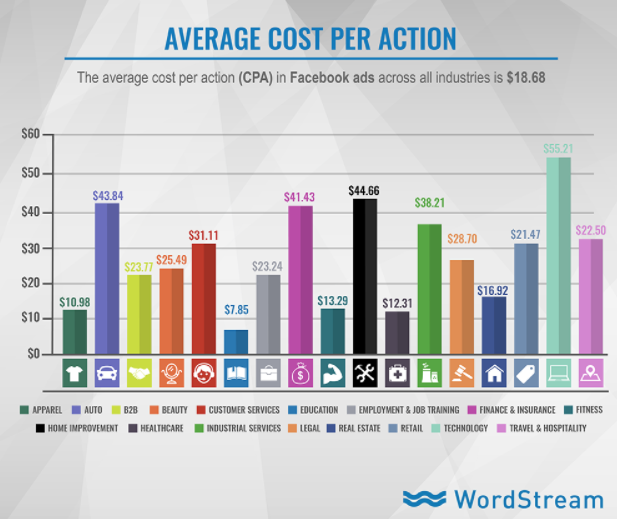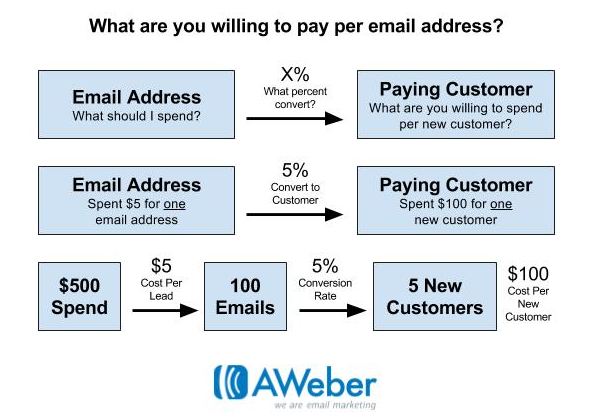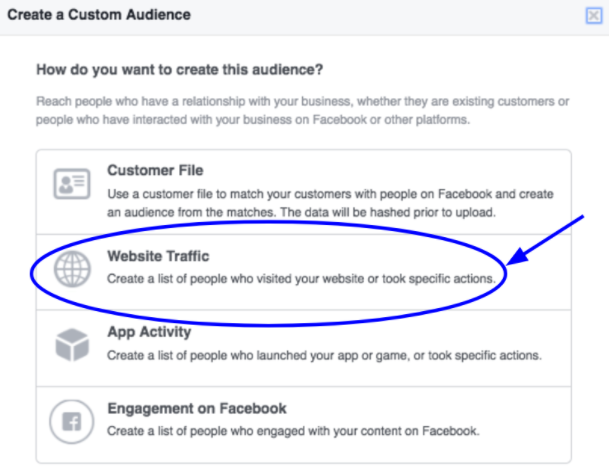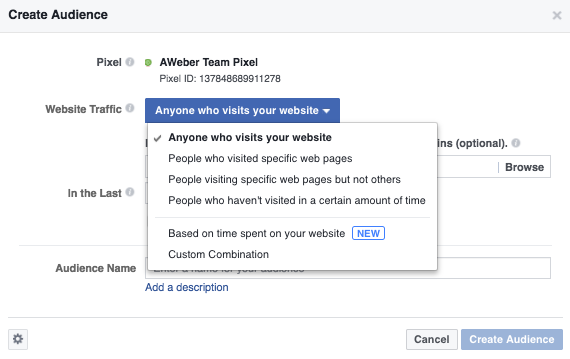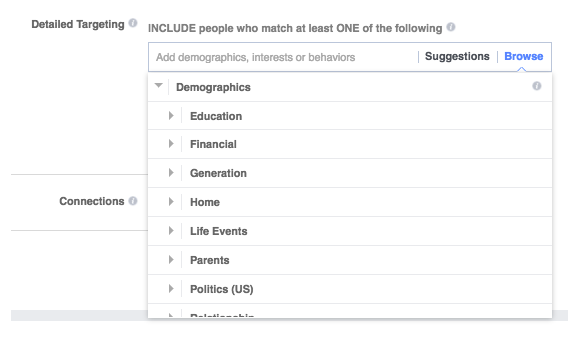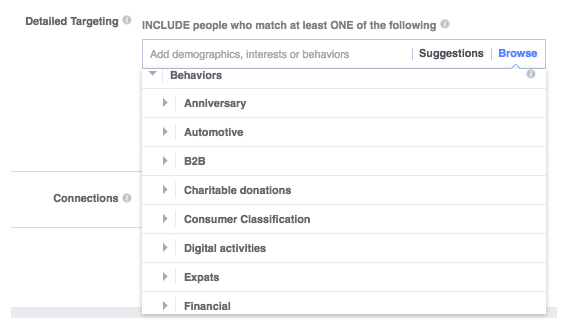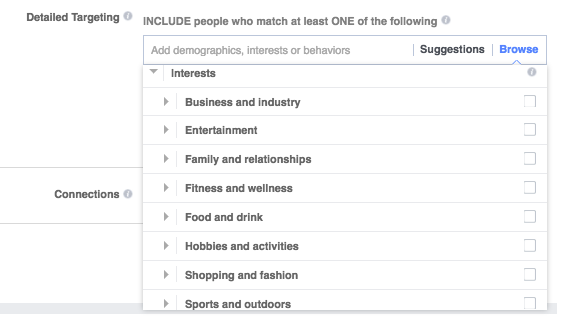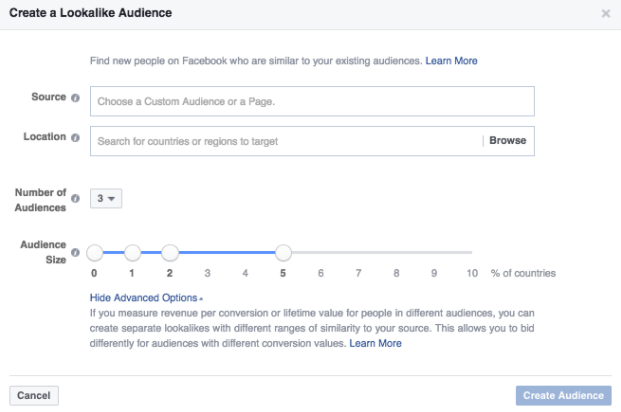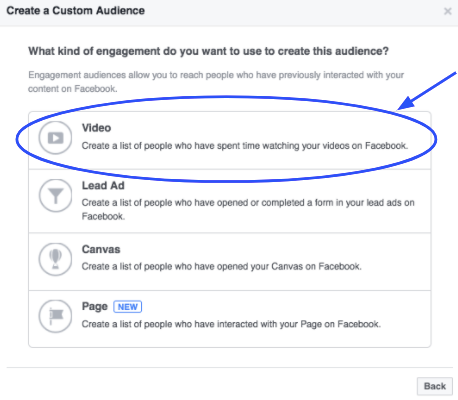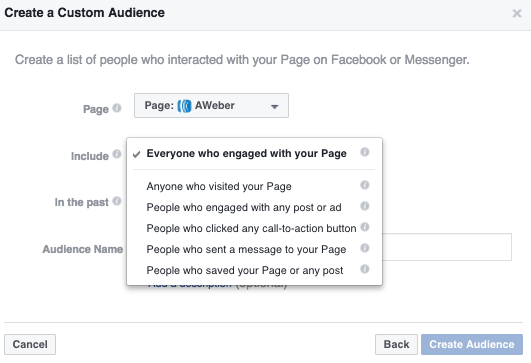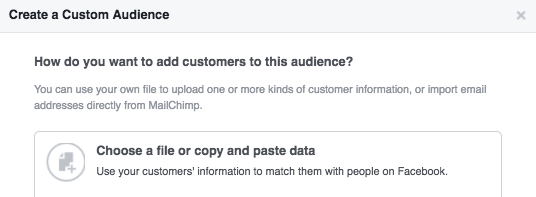8 Facebook Ad Targeting Strategies That Will Help You Build Your Email List
By Rebecca Pollard June 6, 2017
If you’re reading this, you’ve probably realized that posting organically on your Facebook page just isn’t cutting it anymore. That’s no surprise—Facebook page owners have been frustrated for years over the company’s continuous updates to the algorithm that have prioritized reach for ads over organic posts.
Now, Facebook’s latest algorithm change will not only impact organic Facebook posts, but paid ones too! While the change is meant to show less fake news and clickbait in the News Feed, it will also target pages that often get their content hidden or pages that are trying to trick the algorithm. Facebook explained these changes in a blog post earlier this year:
“With this update, we’re adding new universal signals to determine whether a post might be authentic. To do this, we categorized Pages to identify whether or not they were posting spam or trying to game feed by doing things like asking for likes, comments or shares. We then used posts from these Pages to train a model that continuously identifies whether posts from other Pages are likely to be authentic. For example, if Page posts are often being hidden by people reading them, that’s a signal that it might not be authentic.”
While the change could negatively impact pages that are spammy or producing fake news, it could also help to increase ad performance for authentic and engaged pages by eliminating some of the competition.
That means it is more important now than ever before to keep your content targeted and relevant to the audiences you are trying to reach.
Setting Yourself Up For Success
The good news is, Facebook ads offer you great opportunities to reach your exact audiences and deliver the right message to them.
Our expert digital marketing team has spent countless hours in Facebook testing and optimizing to grow our lists and increase revenue for our business. Through our testing, we’ve identified nine ways to create audiences that will help you target the right prospects and convert them into leads that can be nurtured through email marketing.
Never created a Facebook ad before? Here’s how.
The most important first step is to make sure you have conversion tracking in place for your website. Since you’ll be working towards growing your email list, you’ll want to create conversion points that trigger when you’ve collected an email address. You can do this through adding pixels to your website or using custom conversions once you have the main Facebook pixel on your website.
The easiest way to do this is to add the main Facebook pixel to the header section of your entire website and then create custom conversions that trigger off of visits to the thank you page that someone visits after they’ve given you their email address. (If you’re using a third party like OptinMonster or Sumo to help with your email capture experiences, ask them about how to trigger Facebook conversions on their opt in forms.)
Once your conversion points are set up (triggering when someone provides their email address on your website), you’ll want to set your Facebook campaigns up to optimize towards conversions.
Pro Tip: Only 13 percent of FB ads are optimized toward conversions—which means you’ll already be working towards more advanced strategies than your competitors by optimizing ads this way.
Optimizing towards conversions means you’ll also need to have an understanding of how much you’re willing to spend per conversion. This graphic from Wordstream will give you an idea of average cost per action by industry—keeping in mind that an action could be any conversion point that the industry identifies as important to their business:
First, determine how much you are willing to spend for a paying customer. Assuming your key goal is to build your email list, you should consider what you’re willing to pay per new customer and the average conversion rate you see from acquiring someone’s email address to when they become a paying customer. Here’s a visual that can help:
Imagine you have $500 to spend and you’re willing to pay $100 per new customer. You also know that 5% of email addresses that you acquire turn into paying customers. By using that data, you can determine that you’d be willing to spend $5 per email address. You can use this to set goals for your campaigns.
Now you’re ready to deep dive into creating and testing audiences.
Create Your Audiences
Effective Facebook ads work because of three things: clear goals, reaching the right audiences, and delivering the right message (through ad image and copy testing). You’ve got your goals set, now it’s time to find the right audiences.
Here are 8 ways to build audiences to test for your business
1. Pixeled pages
You can build an audience from people who have visited your website. This is a great way to retarget prospects that you know are already familiar with your brand, but for some reason haven’t converted. You can choose to retarget someone who has visited your entire website, one page on your website (like your homepage or order page), or people who have visited sections of your website (like your blog or a category of content).
2. Demographic targeting
Demographic targeting is great for segmenting your audience by factors like education, employment, household and lifestyle details. Facebook offers deep demographic targeting, meaning you can go beyond basic targeting parameters and reach the right people for your business. You can even target by generation (like Baby Boomers or Millennials). The deeper you dive into your audience data, the more successful your campaigns will be.
3. Behavioral targeting
Behavioral targeting allows you to reach people based on things like past purchase behavior, device usage and intent. It’s an extremely effective approach and can be a powerful tool in getting a greater ROI for your ad budget.
4. Interest targeting
You can reach audiences based on their interests, which pulls data from posts they share, apps they use and pages they like. This section includes the most targeting options, including various categories and subcategories. Things like Business/Industry, Entertainment, Hobbies, Shopping and Technology are just some of the main categories you can target. (If you already have an idea of what you’re looking for, just start typing in the search bar, and a combination of these audiences will appear.)
5. Lookalike audiences
Lookalike audiences are an amazing resource that allow you to target people who are similar to audiences that you’re already targeting. Once you’ve identified audiences that you know convert well, create lookalike audiences to target to continue to scale your business with new prospects. Keep in mind, these are typically audiences who have never heard of you before, so make sure you have the right messaging!
The easiest way to start with lookalike audiences is to upload a list of your current customers as a custom audience and then create a lookalike audience based off of that list.
Pro tip: Facebook is testing value based lookalike audiences—check to see if you have this functionality in your account to maximize the effectiveness of your ads.
6. Video
Video is one of the more popular ways of engaging with audiences on Facebook these days—and the algorithms are even favoring video content. In fact, people watch Facebook Live videos three times more than than other videos.
If you’re looking to reach new audiences at a low cost, this is a great way to do it. First, run video ads to top-of-the-funnel audiences (using demographic, behavior, and interest targeting)—these will likely be people who have never interacted with you before. Then, you can create audiences of engaged video viewers (like people who watched 75% of your video). Think of this as a mid-funnel tactic, where you engaged them at the top-of-the-funnel, and now you’ll retarget engaged viewers with a goal of getting their email address (a mid-funnel tactic). Then you can use email nurturing to get them to convert to a paid customer.
7. Page fans (plus, friends of fans)
What better audience to target than people who are already viewing and engaging with your Facebook posts organically? While some of them may already be customers (you can use exclusions to make sure you’re not paying for these people if you’re looking for new audiences), there’s also people who are getting referred to your page and organic post content through friends or because they searched for you in Facebook. Use this as an opportunity to get them more interested and engaged in your brand.
8. Your email lists (data files)
You already have data from your business and you’ve likely already been segmenting it to discover your top performing customers. Use that data to help you target audiences in Facebook—whether it’s for retention marketing (reorders, taking actions that increase LTV) or prospect marketing (like uploading a list of email addresses that you have who haven’t converted yet). Plus, you’ll be able to use this data for creating lookalike audiences.
Use a combination of all of these audiences to create custom audiences that you can save for use across multiple campaigns. Once you find specific audiences that you know work, continue to use them and add in layers of new audiences for testing. (Example: You know a certain demographic target works for you, now you can test multiple interest targeting within the demographic.)
Start building your campaigns
You’ve got the resources you need to create tests in Facebook for your business. All you have to do is get started. Drive to assets where you’re capturing email addresses and then focus on optimizing your email funnel to convert them to paid customers.
Need help with image and ad copy ideas? Check out Nicholas Kusmich’s formula for creating the perfect ad.
Want more advanced tips? Explore Facebook’s Audience Insights and their new Analytics platform (you can build funnels and cohorts to analyze data).
Already working on testing your Facebook ads? Leave a comment below to tell us your most successful audience building tips!
 87% off ends soon!
87% off ends soon! 